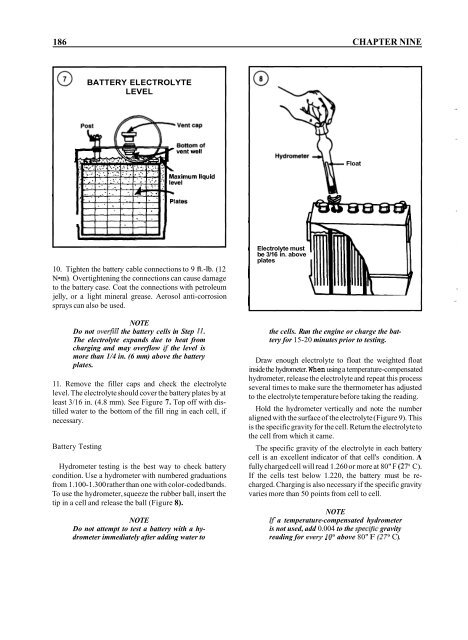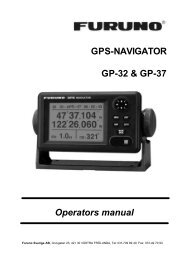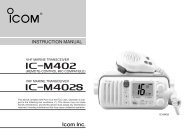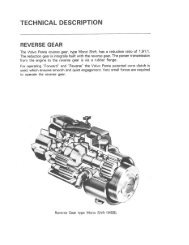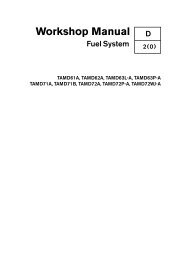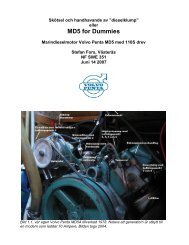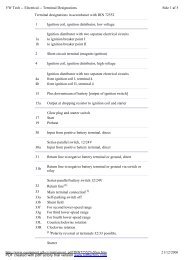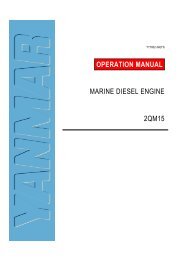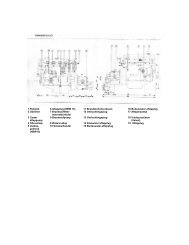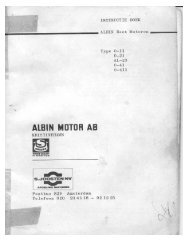Create successful ePaper yourself
Turn your PDF publications into a flip-book with our unique Google optimized e-Paper software.
186 CHAPTER NINE<br />
BATTERY ELECTROLYTE<br />
LEVEL<br />
Float<br />
10. Tighten the battery cable connections to 9 ft.-lb. (12<br />
N-m). Overtightening the connections can cause damage<br />
to the battery case. Coat the connections with petroleum<br />
jelly, or a light mineral grease. Aerosol anti-corrosion<br />
sprays can also be used.<br />
NOTE<br />
Do not overJill the battery cells in Step 11.<br />
The electrolyte expands due to heat from<br />
charging and may overflow if the level is<br />
more than 1/4 in. (6 mm) above the battery<br />
plates.<br />
11. Remove the filler caps and check the electrolyte<br />
level. The electrolyte should cover the battery plates by at<br />
least 3/16 in. (4.8 mm). See Figure 7. Top off with distilled<br />
water to the bottom of the fill ring in each cell, if<br />
necessary.<br />
Battery Testing<br />
Hydrometer testing is the best way to check battery<br />
condition. Use a hydrometer with numbered graduations<br />
from 1.100-1.300 rather than one with color-coded bands.<br />
To use the hydrometer, squeeze the rubber ball, insert the<br />
tip in a cell and release the ball (Figure 8).<br />
NOTE<br />
Do not attempt to test a battery with a hydrometer<br />
immediately after adding water to<br />
Electrolyte must<br />
be 3/16 in. above<br />
plates<br />
the cells. Run the engine or charge the battery<br />
for 15-20 minutes prior to testing.<br />
Draw enough electrolyte to float the weighted float<br />
inside the hydrometer. When using a temperature-compensated<br />
hydrometer, release the electrolyte and repeat this process<br />
several times to make sure the thermometer has adjusted<br />
to the electrolyte temperature before taking the reading.<br />
Hold the hydrometer vertically and note the number<br />
aligned with the surface of the electrolyte (Figure 9). This<br />
is the specific gravity for the cell. Return the electrolyte to<br />
the cell from which it came.<br />
The specific gravity of the electrolyte in each battery<br />
cell is an excellent indicator of that cell's condition. A<br />
fully charged cell will read 1.260 or more at 80" F (27" C).<br />
If the cells test below 1.220, the battery must be recharged.<br />
Charging is also necessary if the specific gravity<br />
varies more than 50 points from cell to cell.<br />
NOTE<br />
If a temperature-compensated hydrometer<br />
is not used, add 0.004 to the spec@ gravity<br />
reading for every 10" above 80" F (27" C).


